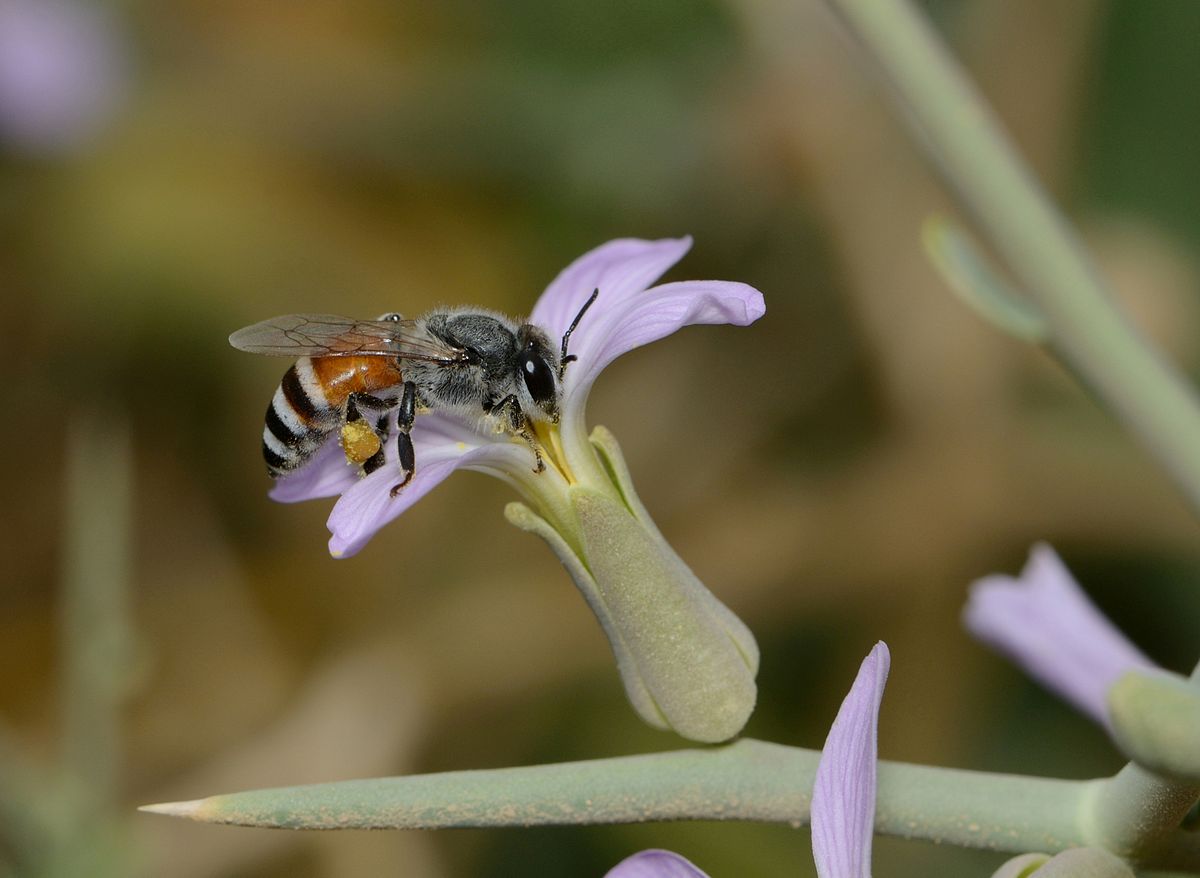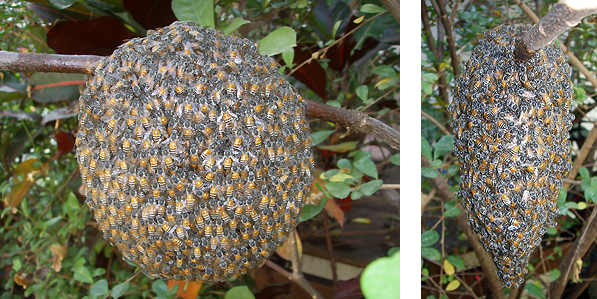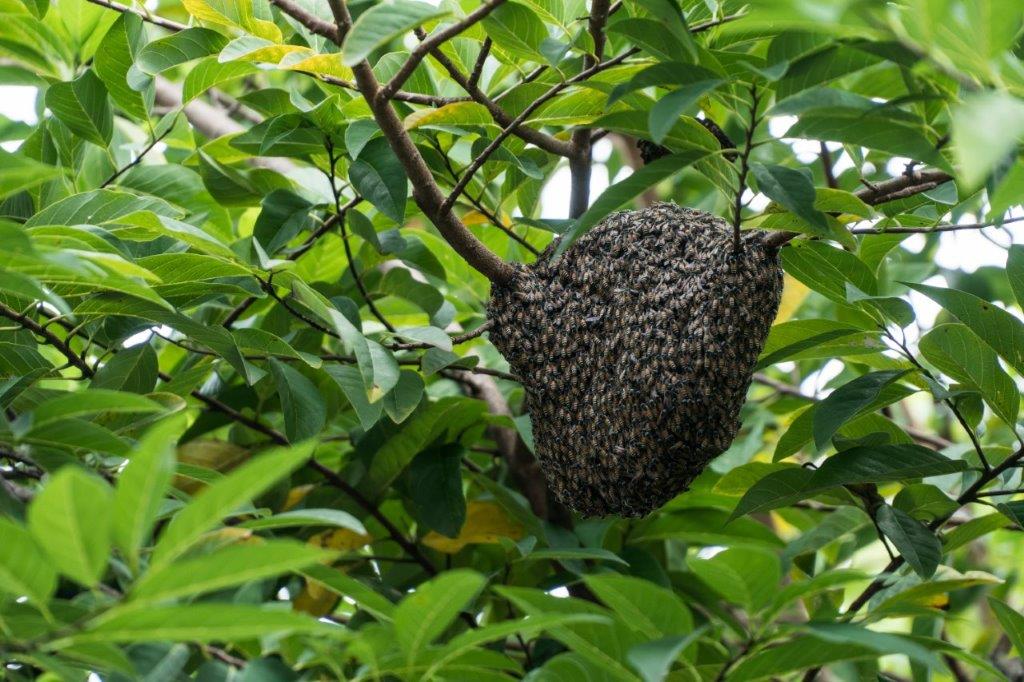
Dwarf honey bee



Apis florea and Apis andreniformis
Should I report?
Dwarf honey bees (Apis florea and Apis andreniformis) are the world’s smallest honey bees, only growing to 10mm. Dwarf honey bees are not found in Australia. Report suspect dwarf honey bees
- Call the Exotic Plant Pest hotline on 1800 084 881,
- Submit an online form, OR
- Email biosecurity@dpi.nsw.gov.au
Include a photo of the insect as part of your report.
Description
There are two different species of dwarf honey bees (Apis florea and Apis andreniformis). Apis florea have a thick red/orange thorax and alternating dark brown and white abdominal banding. Apis andreniformis have a thick black thorax following alternating dark brown and white abdominal banding. Both species range in size from 7-10mm and have a clear wing colour with dark brown veins.
Dwarf honey bees are a social species and live in colonies of approximately 3,000 bees. They swarm seasonally by sending out a scout bee to find the appropriate nest site to lead the rest of the colony to their new destination. These sites are typically small branches protected by leaf foliage.
Distribution
Dwarf honey bees are native across Asia commonly found in tropical areas. Apis florea are naturally distributed from the Indian subcontinent throughout Southeast Asia through to the Malaysian peninsula. Apis andreniformis is less common but still widely spread throughout Southeast Asia covering the Philippines, China and Myanmar. The dwarf honey bee is not known to be present in Australia.
Damage
The dwarf honey bee are competitors to other pollinating species. They can spread unwanted mites and diseases disrupting the environment and threatening the economic market.

